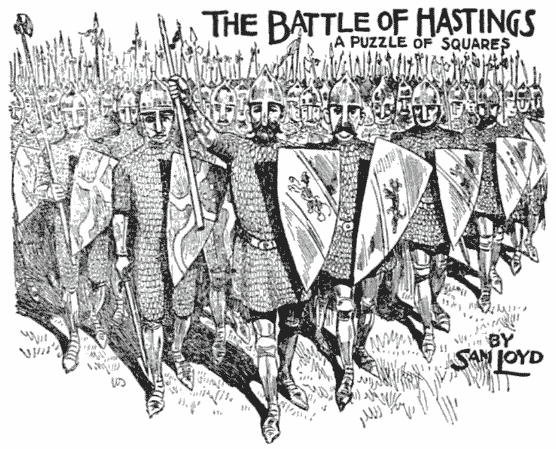The battle of Hastings

- 3410
- 440
- Kristopher Greenholt
 All history students know the mystery and uncertainty that reigns with respect to the details of the memorable battle that occurred on October 14, 1.066. This riddle deals with a curious passage in the history of that battle, a passage that has not received the attention it deserves.
All history students know the mystery and uncertainty that reigns with respect to the details of the memorable battle that occurred on October 14, 1.066. This riddle deals with a curious passage in the history of that battle, a passage that has not received the attention it deserves.
The passage in question, as Professor Henry Dudeney points out, says: "Harold's men remained close together, as was their custom, and formed thirteen squares with the same number of men in each square, and alas! of the Norman who dared to enter his redoubt, because a single blow of a Saxon war ax would break his spear and penetrate his mesh level .. !
When Harold threw himself into the battle, the Saxons formed a single and powerful square, profiring the battle shouts of "¡ut!"," Olicrosse!"," Godemite!".
Contemporary authorities accept that Saxons fought in that solid formation. In "Carmen de Bello Hastingensi", a poem attributed to Guy, Bishop of Amiens, we are told that "the Saxons remained firm in a dense mass". And Henry de Huntingdon speaks of "the square as a castle, impenetrable for the Normans".
If Harold's forces were divided into thirteen squares that, by adding Harold himself, could be arranged in a large square, How many men must have?
The riddle is so difficult that few mathematicians will solve it correctly.
Extracted from the www page.BooksMaravillosos.com.
SolutionThe 13 squares of Harold Eras square with 180 men per side, adding A total of 421.200 men. With the addition of Harold, the number increases to 421.201 men, which forms a great square with 649 men per side.

